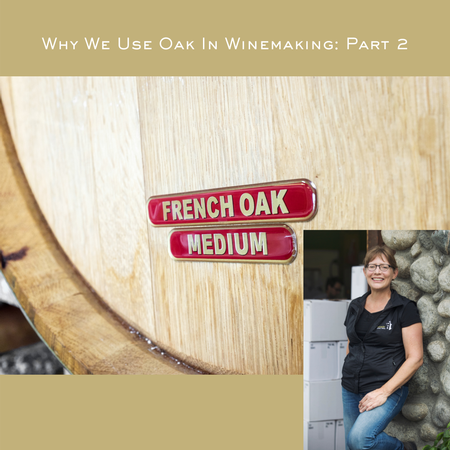Part 2 of 3: Why do we use oak in winemaking? The white edition…
Wooden barrels are used in winemaking for benefits that far outweigh simple flavour contribution from the oak. Wine changes by virtue of being in a small wooden vessel. These changes can be physical – the actual evaporation of small amounts of
water/alcohol through the pores in the wood, resulting in an overall concentration of “all-the-good-stuff-about-wine” in the barrel. Changes can be chemical—interactions between components in the juice or wine with components in the wood or with minute amounts of oxygen entering through pores.
Changes can be the result of temperature control due to the volume to surface area ratio of a small oak barrel. And changes can be psychological—a greater regard in the mind of winemakers and cellar workers for wine that has been given the care and attention required by barrel storage.
In the case of white wine, the majority of whites that see oak are fermented (not merely stored) in the barrel. The winemaker (that’s me) will choose specific blocks of a white variety to be barrel fermented. Grapes are processed normally: sorted, de-stemmed, pressed, cold-settled into a stainless-steel tank where the juice is yeasted. Once the juice is fermenting steadily a portion (could be 100% but generally we use 30-50%) is transferred into barrels.
These barrels are either new, in which case they have been hydrated by filling with water to swell the wood to prevent any leaking, or 2nd- or 3rd-fill in which case they are well-steamed to ensure no spoilage yeast or bacteria are present.
The barrels are filled leaving a couple inches from the bung hole – plenty of room for foam or carbon dioxide to collect – and closed with “breathable” bungs, which allow the CO2 to escape. Barrels are stored in a spot which will best provide a good temperature for fermentation—on our upper patio or, when outside temperatures are excessive, in the depths of the cellar. The winemaker (me again) samples daily to monitor the progress of the fermentation, checking temperature and brix (percent sugar) drop, as well as smell and taste.
The high surface area to volume ratio allows heat to dissipate and favours a slow fermentation similar to that in the tanks with cooling jackets or coils. In about 3 weeks, the sugar is consumed, and fermentation ends. The barrels are filled to the top and bunged with solid bungs. Then we start stirring the barrels to bring the lees, or dead yeast cells, back into suspension. This is called “bâttonage” and is done with a special tool—a “bâton”. At first this needs to be done every 2 to 3 days in order keep the lees from forming a crust.
After three weeks or so, the lees remain nice and creamy and will slowly fall to the bottom of the barrel and stirring is less frequent—about once a fortnight (two weeks, for those of you who did not grow up with the BBC). Barrels are topped each time they are stirred to be sure no oxygen is present. The yeast cells slowly break down and act as a fining agent and as well add a creamy texture to the wine.
The full barrels are left up to six months, depending on grape variety, ripeness of fruit, wine style etc, until the winemaker (hello, me—over here) decides it is time to blend back with the wine that has been fermented in stainless and bottle. The barrels are meticulously cleaned and steamed and then stored using a solution which prevents oxidation or spoilage for the next vintage. To be safe, these barrels are again emptied, rinsed, sniffed, steamed, sniffed again, solution added, and re-bunged every 3 months. Barrel maintenance, whether full or empty, is very labour-intensive and requires patience, care, judgement, and a good sniffer.
Three of Hillside’s Heritage Series white wines are partially barrel fermented.
In Part 3 of this series, I will discuss how we use oak in the making of our red wines.

